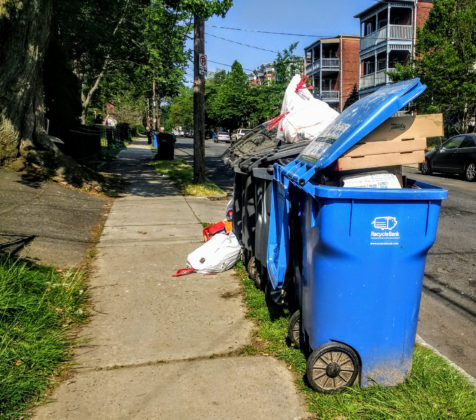A few months ago when I thought about how I might celebrate the 50th anniversary of Earth Day, it did not occur to me that I, and many others, would be forbidden to report to work. This has created the opportunity for more learning and doing. In honor of Earth Day, Real Hartford will have one week of treehugging, dirt worshipping posts.


You’ve learned why Earth Day happened in the first place, its legacy and the setbacks, and what you can do on any given day to make smarter, healthier choices. Obviously, the next question is “what now?”

The Green Stimulus is one step forward. Co-authored by eleven and endorsed by over 1800, this proposal weds priorities: habitat preservation and healing, public health, and economic recovery. Rather than throwing money at exactly what has been harming us this whole time — the fossil fuel industry — this would transition the United States away from that extractive, exploitative, and polluting sector.
The Green Stimulus proposal includes creating millions of green jobs, which they describe as “career-track.” It’s a long proposal that ought to be read in full, but a few highlights include:
Re-staff and fully fund the USDA and EPA science offices, and the network of agriculture extension offices, to quantify carbon reductions. Support regenerative agriculture and compensate farmers (including regenerative ocean farmers) for carbon reduction practices, such as carbon sequestration in soils, the transition to regional and local farming initiatives, and other practices based on the quantified carbon abatement or sequestration (carbon negative land use) of the practices.
and
Enact federal zoning regulation reform to facilitate construction of both dense and affordable housing, with a priority to building near public transit, to ensure new social housing is located in walkable and transit accessible-neighborhoods.
and
Provide grants and loans to local transit agencies and school boards to fund the purchase of electric railcars and engines and electric buses and electric school buses, with the goal of ending all diesel bus purchases by 2025. This must also include targeted investment to support electric bus and railcar manufacturing capacity within the automobile industry in the United States.
and
Restore a climate test, such as the social cost of carbon, as a metric for federal procurement and permitting decisions. These tests should be consistent with the goal of limiting warming to as close as is possible to 1.5°C.
and
Prevent food shortages and surpluses by establishing supply management programs and a parity pricing system for farmers that both ensures farmers, farm workers, and every worker along the food chain a living wage and ensures consumers a high-quality, stable, and ensures local supply of agricultural goods.
Adoption and implementation of the Green Stimulus would have far greater impact than one person switching away from plastic straws (though do that anyway). Those wanting to see this proposal become reality can endorse it and contact their legislators. Email the governor while you’re at it.

Another initiative that you can support by dropping Gov. Lamont an email is the Transportation Climate Initiative of the Northeast and Mid-Atlantic States.
This collaboration was reinvigorated in June 2018 when the 11 states’ DEEP, DOT, and governors set the goal to reduce greenhouse gas emissions by 45% by 2030. Connecticut, Delaware, Maine, Maryland, Massachusetts, New Jersey, New York, Pennsylvania, Rhode Island, Vermont, Virginia, and Washington D.C. have a framework document that they have agreed on: states will have a cap on how much gas and diesel can be sold in state per year. That cap will decline each year, on target with the reduction in fossil fuel greenhouse gas emissions reductions that the states have agreed to. Fuel wholesalers would, at auction, purchase credits that would let them sell gasoline and diesel in each state. Auction revenue would then be invested into sustainable transportation infrastructure and projects. Connecticut’s auction revenue would be fed into green transportation investments within Connecticut.
Although, as with nearly everything, Covid-19 has proven disruptive, it is worth contacting Gov. Lamont to let him know that you support this measure. The hope remains that in 2021 legislation will be passed in every participating state, and the ten year program would begin in 2022. It can’t hurt to begin reaching out to your legislators now.


